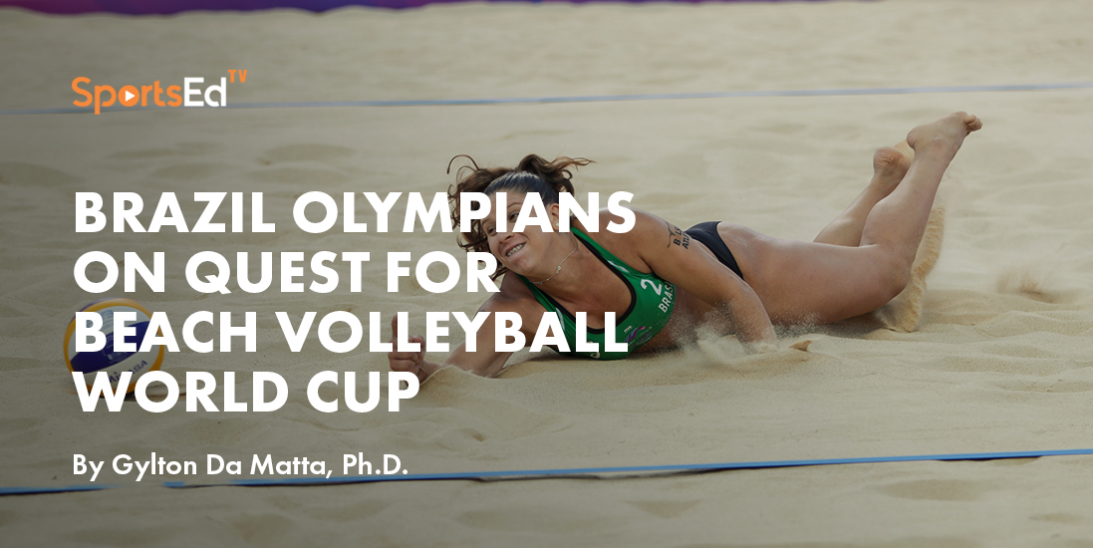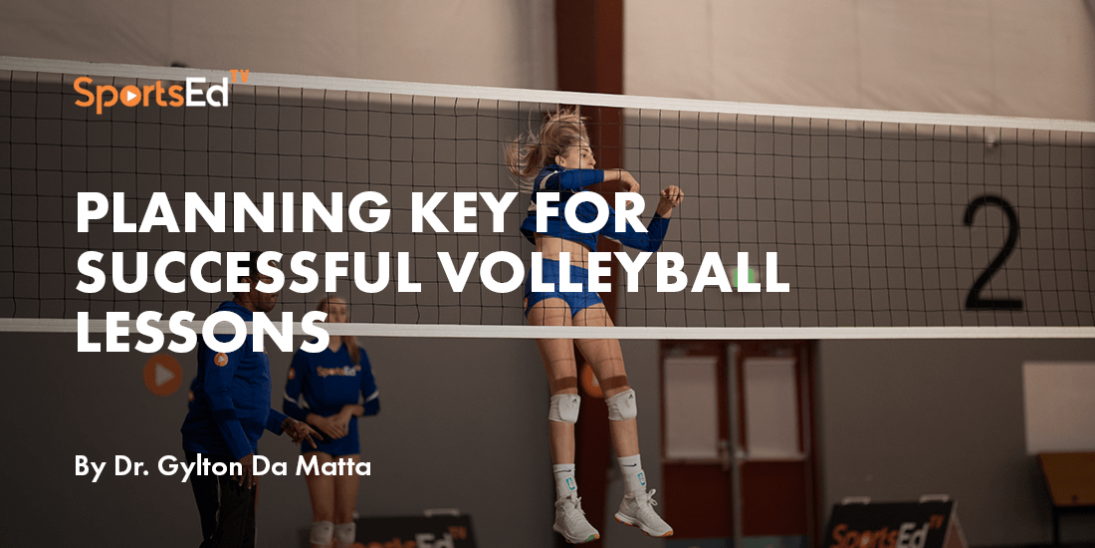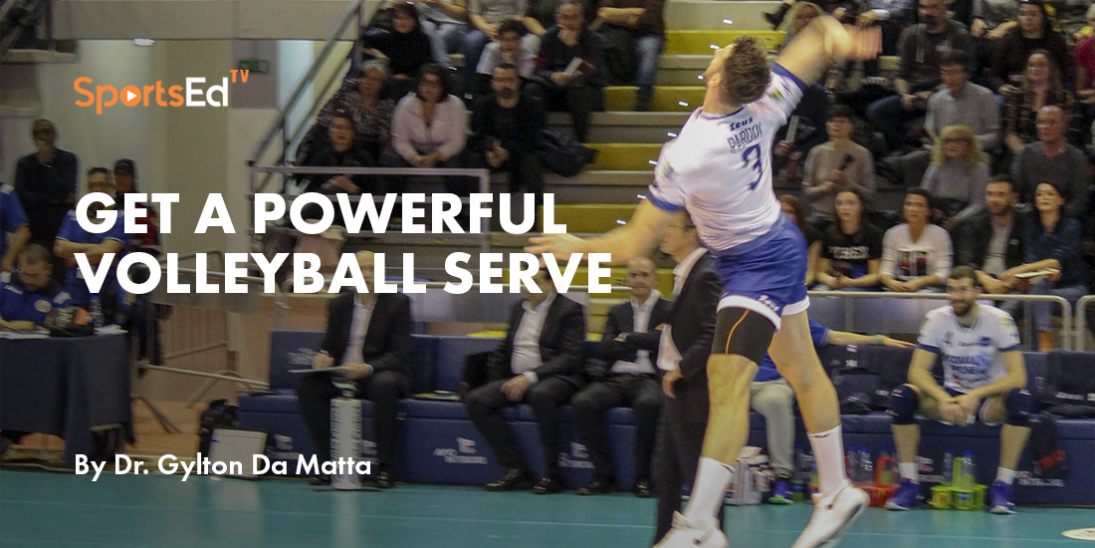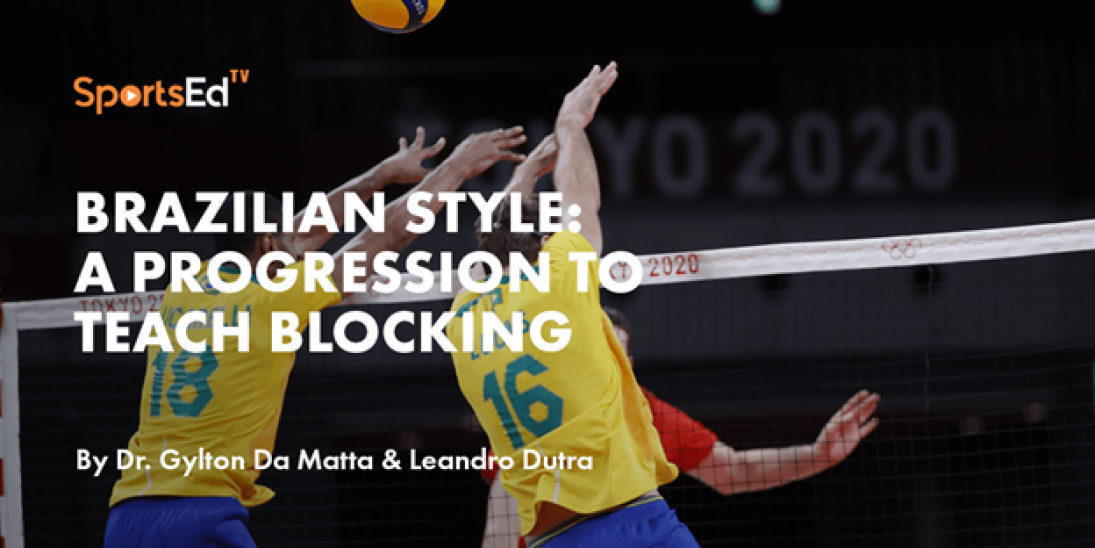Volleyball
Welcome and thanks for visiting...

The Strong Connection: The Chain of Muscles in Volleyball Attack
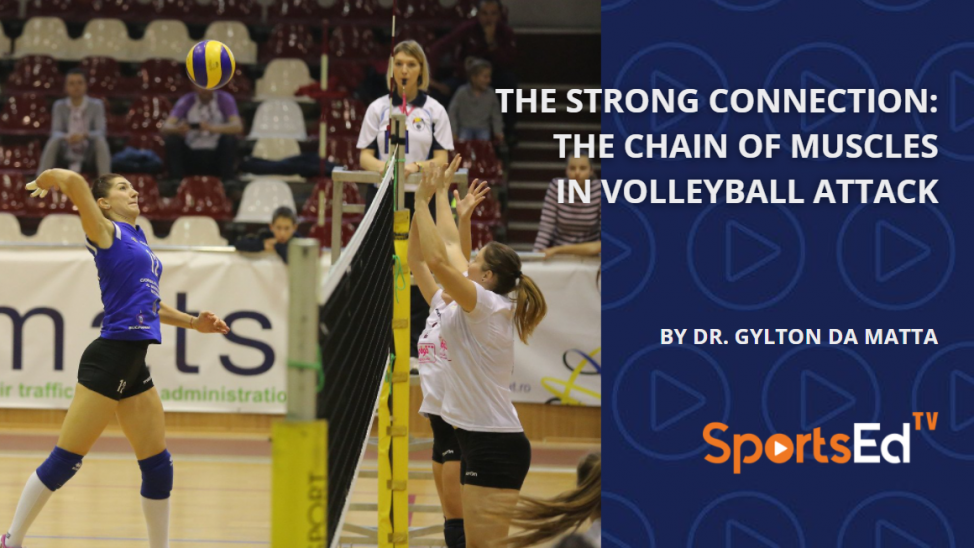
SportsEdTV Volleyball is committed to bringing athletes, coaches, and parents pro-level basketball education videos for FREE. All levels, anywhere, anytime. Check out our full instructional library and sign up to join our volleyball community!
The power generation in attacking creates a distinct asymmetry in the air and it can affect the coordination of the multiple segments of the body. The chain of muscles and the aerial training of volleyball players is critical to assure maximum reach, alignment, and accuracy. We want to call people’s attention for the elite development of tall ectomorph volleyball players that have a significant wingspan in comparison to their heights. Both men and women are reaching about 32-38 inches above the net. And somehow many volleyball players do not reach the ball at the peak of their jumps (timing issue) nor at their maximum reach (coordination/ body position issue). Is it possible to correct these learning variables? How can we teach spatial awareness and balance to modern volleyball players? What is the essential concept of spiking in volleyball? What is the rock foundation, upon which, volleyball coaches teach spiking to the elite volleyball players across the world?
To address these questions, I would like to propose a pragmatic professional perspective. In plain English, what do expert coaches do to teach timing and body posture in volleyball spiking?
Those have been legitimate question posed by parents, volleyball players and lots of coaches across the globe. I honestly do not have the answers, but I have one good hint! I will just talk about volleyball!
The efficiency of a powerful spike delivered by a volleyball player at the peak of their jump can be better explained by the application of the chain of muscles activation to strike the ball (with finesse, precision, and accuracy) at the highest point of contact to overcome the blockers, be able to see all shots available and ultimately get a kill.


Felipe Brito, one of our former players, who played in college for BYU, hitting a quick attack over the opponent’s block. The oblique position is caused by the activation of the posterior chain of muscles. We recommend a biomechanical research to investigate ways to implement a more symmetrical aerial body position.
One of the five top breakthroughs of my volleyball dissertation was the application of the concept called “chain of muscles” into the main volleyball skill. Also known as the kinetic chain the interconnection of muscles acting harmonically across the body hemispheres and in between the superior and inferior limbs is a phenomenal neurophysiological system. The anterior and posterior chain of muscles have a unique role in the spatial coordination, but it is the transverse chain of muscles along with all core/trunk wall that have the most significant impact in attacking, blocking, diving and serving in volleyball. From mid-80’s through mid-90’s we have analyzed the body posture and coordination of top players such as Flo Hyman (USA), Tara Cross Battle (USA), Lyn (Jenny) Ping (CHN) as well as Gilson (BRA), Bernardi (ITA) and Jorge Edson (BRA). From the 386 observations, we noticed that many players demonstrated a body balance in the air that should be modeled by players today, in order to prevent injuries. Maybe some colleagues might argue that prior to 1998, the volleyball game was quite different. However, when we compare the techniques of volleyball players then and now, we notice that there has been a deterioration on body alignments and aerial posture.
This article depicts a reflection for top volleyball players proposing a refinement task (body alignment through the proprioceptive training of the chain of muscles) to maximize the attack reach, facilitate the accuracy and allow a balanced landing so prayers can expand their careers longevity. This is an article for the players! Player’s cognitive preparation represents one of the factors of success when developing an all-around performer. In addition to learn how to spike, volleyball players need to learn how to learn, how to train and how to perform the volleyball spike in a game situation.
There is a strong correlation of athletes’ body posture with the expansion of their volleyball careers, see Tara Cross Battle, Lyn (Jenny) Ping, Rita Crocket, Walewska Oliveira, Carol Gattaz, Virna, Fabiana Coutinho and Sheila. All long-term elite players who demonstrated an outstanding body alignment in their spike approaches.
The following refinement tasks of attacking rely heavily on the notion of how the body produces torque while in the air. The ability of a volleyball player to take off by using their arms and focusing of their timing and alignment, require an accurate system of muscles that are strongly connected and linked through the “chain of muscles”.
In addition to the concepts explained in the video, I normally teach some extended walks on a line, I teach handstands, some cartwheels and also big vertical jumps on a trampoline. I am not advocating that volleyball players should be gymnasts. Nor am I saying that there is any transfer from doing gymnastics into volleyball. However, I am suggesting that volleyball players need to incorporate more body control, flight alignment and land safely, thus the recommendation of the refinements proposed in the Deliberate Practice Volleyball Method should be observed, analyzed and seriously considered.
The aerial body control and the ability of a volleyball player to selectively contract and relax specific muscles determines a harmonious body extension and also facilitates the contraction of the trigged anterior, posterior and transverse kinetic chains. In simple terms, when the body in on the ground the coordination from the Central Nerve System, the proprioceptors and the gravitational muscles exercise a set of physiological mechanisms that are very familiar to athletes, but when the body is in the air, the movement science is transposed into a new dimension. The body moves, acts, feels, and “thinks” differently in the air versus when it is grounded. In the air, volleyball players should learn how to fully extend their hips and activate the chain of muscles or kinetic chains.


Typical X position, an aerial predisposition related to the spike also from an aerial stance.
For this reason, I have trained hundreds of top elite players who have acquired an optimal aerial balance and coordination through the application of trampoline and gymnastics educational exercises combined with blocking, serving, attacking, and diving volleyball drills.
How do we teach our volleyball players to fly proficiently and land safely? That is a good question!
Our volleyball players are very athletic, but they need the fundamental foundation of basic motor skills so they can execute “flights” proficiently and be able to spike, block, serve and dive safely. Fortunately, we have had enough evidence from our colleagues from France, Japan, Russia and Brazil who have efficiently and effectively adopted similar strategies into their volleyball applied motor learning repertoire. Unfortunately, our Physical Education programs have moved from teaching gymnastics and foundational locomotor skills for sports and now school PE programs teach cup stacking very, very well! The development of players for the 21st Century represents a challenge for youth coaches training and teaching tall players. Tall players are normally later mature, and they are often aggregated into the volleyball talent development pipeline after their 15’s years of age for girls and 17’s years of age for boys. In many cases, tall players are labeled as uncoordinated and when recruited to play club teams, it is not uncommon that they hear:
“_ You are very tall, but I think it is too late for you to play volleyball!”
Tall or short, I believe that all volleyball players should play a non-contact sport for a lifetime. In the United States there is a 25% injury rate in volleyball, and I truly believe that implementing the concept of chain of muscles, body extension, coordination and body awareness will help hundreds of volleyball players to reach the ball higher and land safer after any aerial action in volleyball.
Gylton Da Matta, Ph.D. Faculty of Foundations of Sports Management and Foundations of Education at Colorado State University and Volleyball Executive Director SportsEdTV. Founder and President of SportsEdTV Foundation
Da Matta, G.B. (In Press). (Editor) 21st Century Volleyball Expertise. SportsEdTV Publisher: Miami, FL, USA.

